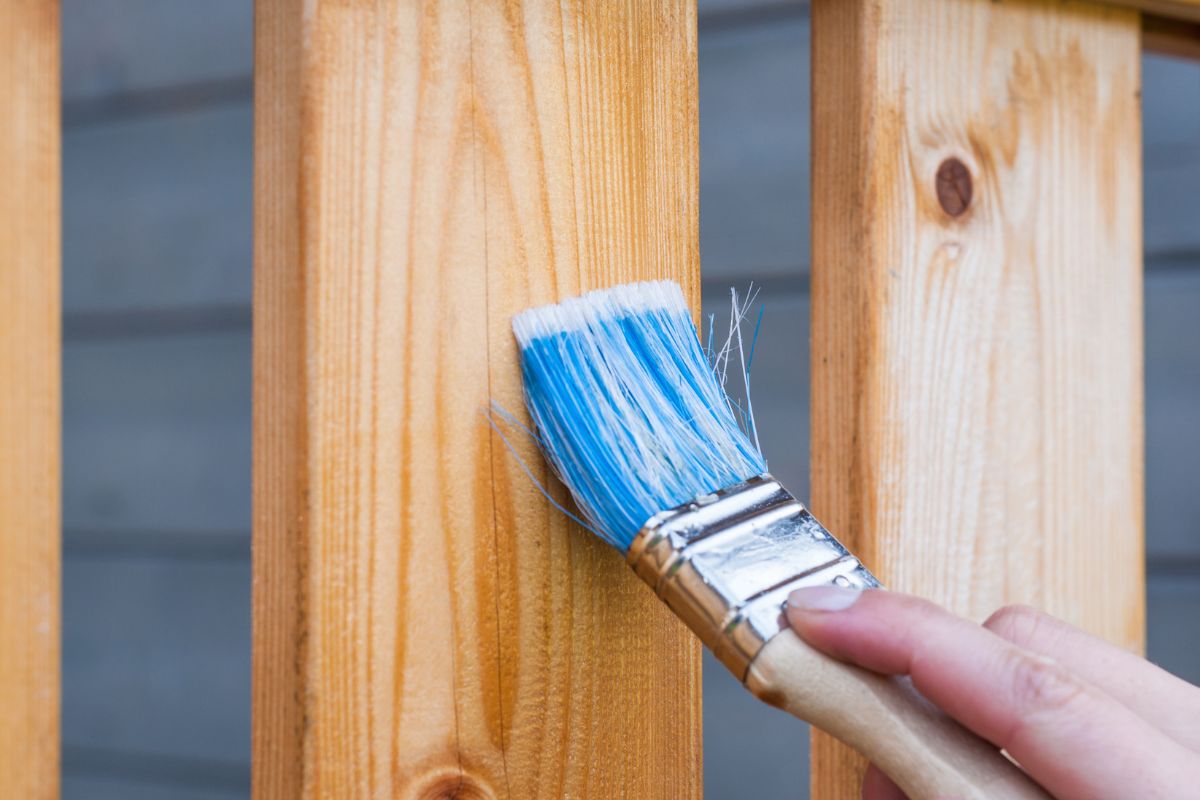What Is Varnish? Types, Uses & Application Tips

Image Source: Canva
Varnish is a protective finish that enhances and safeguards wood surfaces, providing a hard, clear film that resists moisture, UV rays, and scratches. You can choose from various types, like oil-based for durability or water-based for quick drying. It’s perfect for furniture, floors, and outdoor projects. Application involves using the right tools and techniques, such as sanding between coats for a smooth finish. Stick around to explore more about selecting and maintaining your varnished surfaces!
- Varnish is a clear protective layer that enhances and safeguards wood surfaces from moisture, UV rays, and scratches.
- Types of varnish include oil-based for durability, water-based for low odor, and polyurethane for excellent scratch resistance.
- Common uses of varnish involve protecting furniture, cabinetry, wooden floors, and outdoor projects from damage and wear.
- Application techniques require even coats, appropriate tools, and sanding between layers for a smooth finish.
- Maintenance involves regular dusting, gentle cleaning, and touch-ups to preserve the varnish's appearance and effectiveness.
Understanding Varnish: Definition and Characteristics
Varnish is more than just a finishing touch; it’s a protective layer that enhances the beauty of wood surfaces. It’s a clear, hard film that not only adds gloss but also safeguards against moisture, UV rays, and scratches. When you apply varnish, you’re sealing the wood, preventing damage and prolonging its lifespan. The application process typically involves preparation, sanding, and multiple coats for ideal results. You'll find that varnish dries quickly, allowing you to finish projects in a timely manner. Plus, it’s versatile; you can use it on furniture, floors, and even outdoor items. Understanding varnish's characteristics helps you appreciate its role in woodworking and guarantees you make informed choices for your projects.
Types of Varnish: An Overview
While exploring the world of finishes, you'll quickly discover that there are several types of varnish, each designed for specific applications and environments. The most common types include oil-based, water-based, and polyurethane varnishes. Oil-based varnishes offer a rich, warm finish and are highly durable, making them ideal for high-traffic areas. Water-based varnishes dry quickly and emit fewer fumes, making them a popular choice for indoor projects. Polyurethane varnishes provide excellent protection against scratches and moisture, suitable for both indoor and outdoor use. You might also encounter specialized varnishes, like UV-resistant or marine varnishes, designed for unique conditions. Understanding these options helps you select the best varnish for your specific needs and guarantees satisfying results.
Common Uses of Varnish in Woodworking
When you’re working on woodworking projects, applying varnish can greatly enhance the beauty and durability of your work. Varnish is commonly used to protect furniture, cabinetry, and trim, giving them a polished finish that highlights the wood’s natural grain. You can also use varnish on wooden floors to shield against scratches and stains while providing an attractive sheen. For outdoor projects, like garden furniture, varnish acts as a barrier against moisture and UV rays, prolonging the life of your pieces. Additionally, it’s perfect for art projects, sealing and preserving intricate carvings or painted surfaces. By incorporating varnish into your woodworking routine, you’re not just finishing your project; you’re ensuring it stands the test of time.
How to Choose the Right Varnish for Your Project
Choosing the right varnish for your woodworking project is key to achieving the desired finish and protection. Start by considering the type of wood and its intended use. For indoor items, a water-based varnish might be perfect, as it dries quickly and is low in odor. If your project will face outdoor elements, opt for an oil-based varnish for superior durability and weather resistance. Next, think about the finish look you want—glossy, satin, or matte. Each offers a different aesthetic and level of sheen. Finally, evaluate application methods; some varnishes are easier to apply with a brush, while others work better with a spray. By evaluating these factors, you'll guarantee a successful and stunning finish for your project.
.jpg)
Application Techniques for a Flawless Finish
To achieve a flawless finish with varnish, it’s crucial to master the application techniques that best suit your project. Start by selecting the right tool—brushes, rollers, or spray guns each have their advantages. For brushes, use synthetic bristles for water-based varnish and natural bristles for oil-based options. Always apply in thin, even coats, and follow the grain of the wood to avoid streaks. If you’re using a spray gun, maintain a consistent distance and speed to guarantee an even coat. Don’t forget to sand between coats with fine-grit sandpaper to enhance adhesion and smoothness. Finally, allow adequate drying time before applying additional layers. Following these techniques will help you achieve a professional-looking finish every time.
Maintenance and Care for Varnished Surfaces
After achieving that flawless finish, maintaining and caring for varnished surfaces is key to preserving their beauty and durability. First, regularly dust the surface with a soft cloth to prevent scratches and build-up. Avoid using harsh chemicals or abrasive cleaners, as they can damage the varnish. Instead, opt for a mild soap solution when deeper cleaning is necessary. If you notice any scratches or dull spots, consider applying a touch-up varnish to restore the shine. Additionally, keep varnished surfaces away from direct sunlight and extreme humidity to prevent fading and warping. Finally, always use coasters and placemats to protect against heat and moisture. Following these simple steps will help keep your varnished surfaces looking stunning for years to come.
Conclusion
To summarize, varnish is an essential finish that can elevate your woodworking projects, providing both protection and beauty. With various types available, understanding their characteristics helps you choose the right one for your needs. By mastering application techniques and maintaining your varnished surfaces, you’ll guarantee lasting results. So, whether you’re a seasoned pro or a DIY enthusiast, don’t underestimate the power of varnish to enhance your creations and keep them looking their best!









